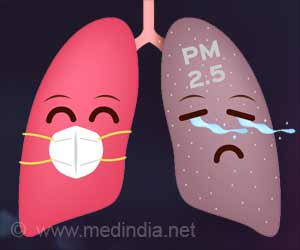Delhi's air quality index (AQI) turns 'Severe' for the first time this season. The national capital's air quality turns hazardous with a thick haze covering the city post-Diwali.

Though the AQI had moderated in the morning, it worsened in the afternoon around 1 p.m. and hit a peak score of 355 at 4 p.m., as per US Embassy data.
Post-Diwali, the Delhi NCR region, has been choked by high pollution levels after the bursting of firecrackers.
According to a forecast by Safar India, the overall air quality of Delhi has improved as a level of 24 hours averaged value of lead pollutant (PM2.5) returned back to below 250 early Tuesday morning that is defined as "Very Poor," as forecast.
As indicated in the extended range SAFAR forecast, the overall pollution level during the Diwali period of the current year (2019) was found to be better than the past three years. Boundary layer winds speed helped to flush out an additional load of Monday night.
Safar India said that as of Tuesday, the stubble plume from northwest regions had become one of the significant factors in deteriorating Delhi’s air quality. As evident from SAFAR multi-satellite fire product, effective stubble fire counts of Haryana and Punjab have increased from 1,654 to 2,577 during the past 24 hours after showing a noticeable dip on October 27.
Advertisement
On Tuesday, the transport level wind direction is northwesterly and hence favorable for plume transport, and as per SAFAR-model, the stubble share may touch this year’s peak value of 29 percent on Wednesday.
Advertisement
"AQI is forecasted to be in higher-end of very poor category for the next two days with few touching higher levels. An increase in boundary layer wind speed is expected by November 1, which is likely to bring improvement in AQI," the forecast said.
Source-IANS









